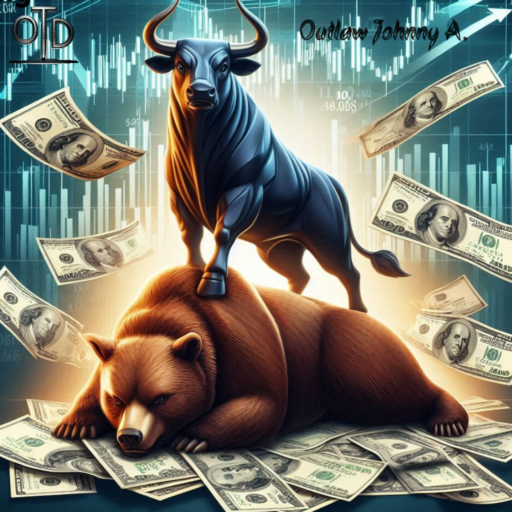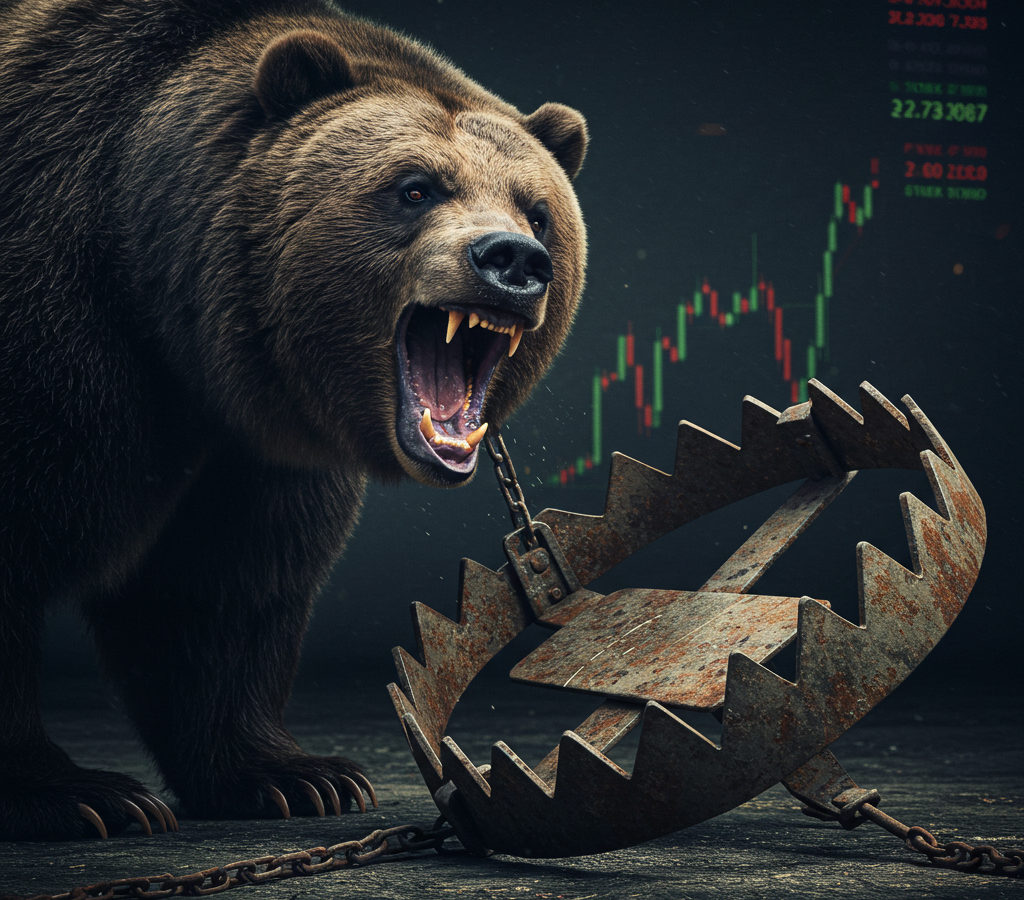Today’s market had us all clapping at what appeared to be a “bounce” after a brutal selloff—but don’t get too excited. This is not a miracle rebound signaling that the bottom has finally been reached; it’s merely another bear market bounce, and history tells us such reversals are often as deceptive as a mirage in the desert.
The Bouncing Act: A Temporary Reprieve
It’s tempting to see the market’s recent uptick as a sign of recovery, but seasoned investors know better. Bear market bounces—often dubbed “dead cat bounces” by those who’ve seen too many—are typically fleeting, temporary rallies during an overall downtrend. Historically, these bounces can last from mere days to a few weeks, luring the unwary into thinking that the worst is over. News flash: the market’s current bounce is likely nothing more than a trap for anyone eager to jump back in at what appears to be a bargain.
“I told you—patience is key. This bounce is a classic case of the market faking recovery before continuing its downward slide.”
Consumer Sentiment Takes a Nosedive
Recent data paints a grim picture for consumer confidence. According to Reuters, U.S. consumer confidence plummeted to an eight-month low in February as worries about rising tariffs and policy uncertainty clouded shoppers’ minds. When everyday consumers start clipping their spending because they’re anxious about the future, it’s rarely a precursor to a full-blown recovery. Instead, it’s a canary in the coal mine—hinting that the “bounce” might be more of a prelude to further declines.
CapEx Spending: The “Cap-Exiting” Trend
If companies are postponing major investments, you’d better believe they’re not exactly singing “Yippee!” over the market rally. Business leaders are tightening their belts and delaying capital expenditure plans as uncertainty in Washington reaches a fever pitch. With policies still up in the air—no one wants to commit to expensive projects until there’s some clarity on tariffs and regulatory shifts—the steady stream of corporate investments is drying up. When you see CapEx spending falling, it’s a clear sign that businesses are bracing for more turbulent times rather than gearing up for a robust recovery.
CEO Sentiment: Even the Bigwigs Aren’t Buying It
Even the Business Roundtable’s CEO Economic Outlook Survey isn’t putting on rose-colored glasses. Recent surveys reveal that sentiment among CEOs is sliding downhill as leaders confess they’re holding off on both hiring and capital spending. When the top brass of America’s largest companies are whispering about “waiting for policy clarity,” it should serve as a stark warning to investors. In an environment where corporate spending is on pause, expect growth to remain stunted—at least until Washington stops playing political ping-pong.
Washington Uncertainty: A Policy Quagmire
Speaking of Washington, the policy landscape is currently as clear as mud. With a series of tariffs, government spending freezes, and the ever-changing directives coming from the highest offices, companies are understandably hesitant to make big moves. Uncertainty isn’t just a buzzword; it’s a tangible force that’s keeping even the most risk-tolerant firms on the sidelines. Every time a government announcement adds another twist to the regulatory roller coaster, companies retreat further into caution—delaying investments, pausing hiring, and shying away from any move that might later turn out to be a costly mistake.
DOGE and the Domino Effect of Government Layoffs
And if you thought policy uncertainty was bad enough, consider the chaos wrought by DOGE’s latest antics. In a move that sounds more like a plot twist from a financial thriller than sound economic management, DOGE is laying off government workers. For every government worker that gets the pink slip, roughly two contractors feel the ripple effect—spurring a contraction in related industries. This isn’t just an isolated cut; it’s a harbinger of broader spending slumps that could weaken overall economic momentum. When the public sector—and its extensive network of contractors—start contracting, the private sector invariably takes a hit as well.
“I told you, folks—layoffs here and there are not isolated incidents. They ripple out like dominoes, dragging even more sectors down with them.”
Historical Perspective: Lessons from Past Bounces
A stroll through the annals of financial history reveals a pattern: after every deadcat bounce, the market resumed its decline. The bounces following the 2007-2009 bear market, for example, were brief and deceptive, offering temporary hope before plunging deeper into recessionary territory. While the current bounce might evoke memories of previous recoveries, the underlying fundamentals—faltering consumer sentiment, falling CapEx, and growing policy uncertainty—suggest that the worst may still be ahead.
“Remember the bear traps of old? History repeats itself, and if you’re lured by a brief uptick, you might just end up buying at the peak of a dead cat bounce.”
Conclusion: Patience over Panic
So, what’s the takeaway for the savvy investor? Exercise extreme caution. Do not be seduced by a short-lived bounce that masks a deeper, underlying bearish trend. While it might be tempting to believe that a recovery is underway, the convergence of falling consumer confidence slashed corporate CapEx, gloomy CEO sentiment, and a policy landscape fraught with uncertainty should signal one thing: the market has not yet bottomed out.
“I told you—patience is not just a virtue; it’s an investment strategy in today’s bear market bounce. The bounce may continue for a short period, but don’t be left on the trampoline alone. The loser is always the last one off.”
Investors take heart in the wisdom of history and the caution of current data. Instead of making big bets on what appears to be a recovery, consider waiting for more definitive signs of a bottom before diving back in. This is most likely a bear trap—a brief rally in a longer bear market—and those who rush in too quickly may soon find themselves trapped by the very market they hoped to profit from.
Summary (TLDR)
Don’t get caught in the bear trap!
In this market circus, let sarcasm be your guide and patience your secret weapon. The bear trap is real, and while the bounce might give you a fleeting thrill, it’s the fundamentals you should be watching, not the fireworks.

